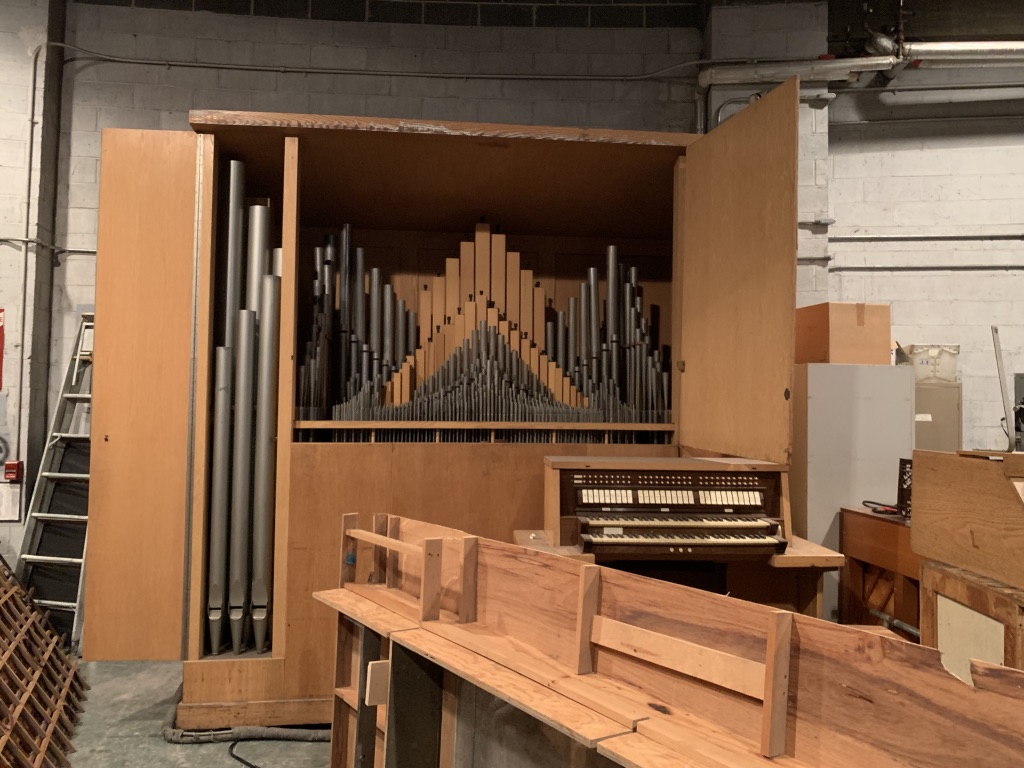









Your Custom Text Here
Click here to download specifications.
Best and/or earliest offer.
Recipient is responsible for removal of the organ, and Organ Clearing House Finder’s Fee ($2000).
Built in 1965, this organ was intended for storage “backstage” in a large multi-purpose auditorium, ready to be rolled out when needed. The organ and console are mounted on separate rolling platforms, connected by a large umbilical. With installation of “aftermarket” solid-state controls and switching, the organ could easily be wired to console with “plug-in” connectors.
The case (white oak plywood) shows repairable cosmetic damage, but the ivory keyboards and cone-tuned pipes are in excellent condition.
As the organ was stored amongst other theater fixtures, it was not possible to open the right-side case door all the way. In these photos, that case door conceals the symmetrically opposite facade of Bass Principal pipes seen at the left end of the organ. There are access panels for tuning and mechanical maintenance at the back of the organ.
The organ has not been played for several years, but it is roughly playable, and easily restorable. Contact John Bishop john@organclearinghouse.com to arrange your audition visit.
Click here to download specifications.
Best and/or earliest offer.
Recipient is responsible for removal of the organ, and Organ Clearing House Finder’s Fee ($2000).
Built in 1965, this organ was intended for storage “backstage” in a large multi-purpose auditorium, ready to be rolled out when needed. The organ and console are mounted on separate rolling platforms, connected by a large umbilical. With installation of “aftermarket” solid-state controls and switching, the organ could easily be wired to console with “plug-in” connectors.
The case (white oak plywood) shows repairable cosmetic damage, but the ivory keyboards and cone-tuned pipes are in excellent condition.
As the organ was stored amongst other theater fixtures, it was not possible to open the right-side case door all the way. In these photos, that case door conceals the symmetrically opposite facade of Bass Principal pipes seen at the left end of the organ. There are access panels for tuning and mechanical maintenance at the back of the organ.
The organ has not been played for several years, but it is roughly playable, and easily restorable. Contact John Bishop john@organclearinghouse.com to arrange your audition visit.